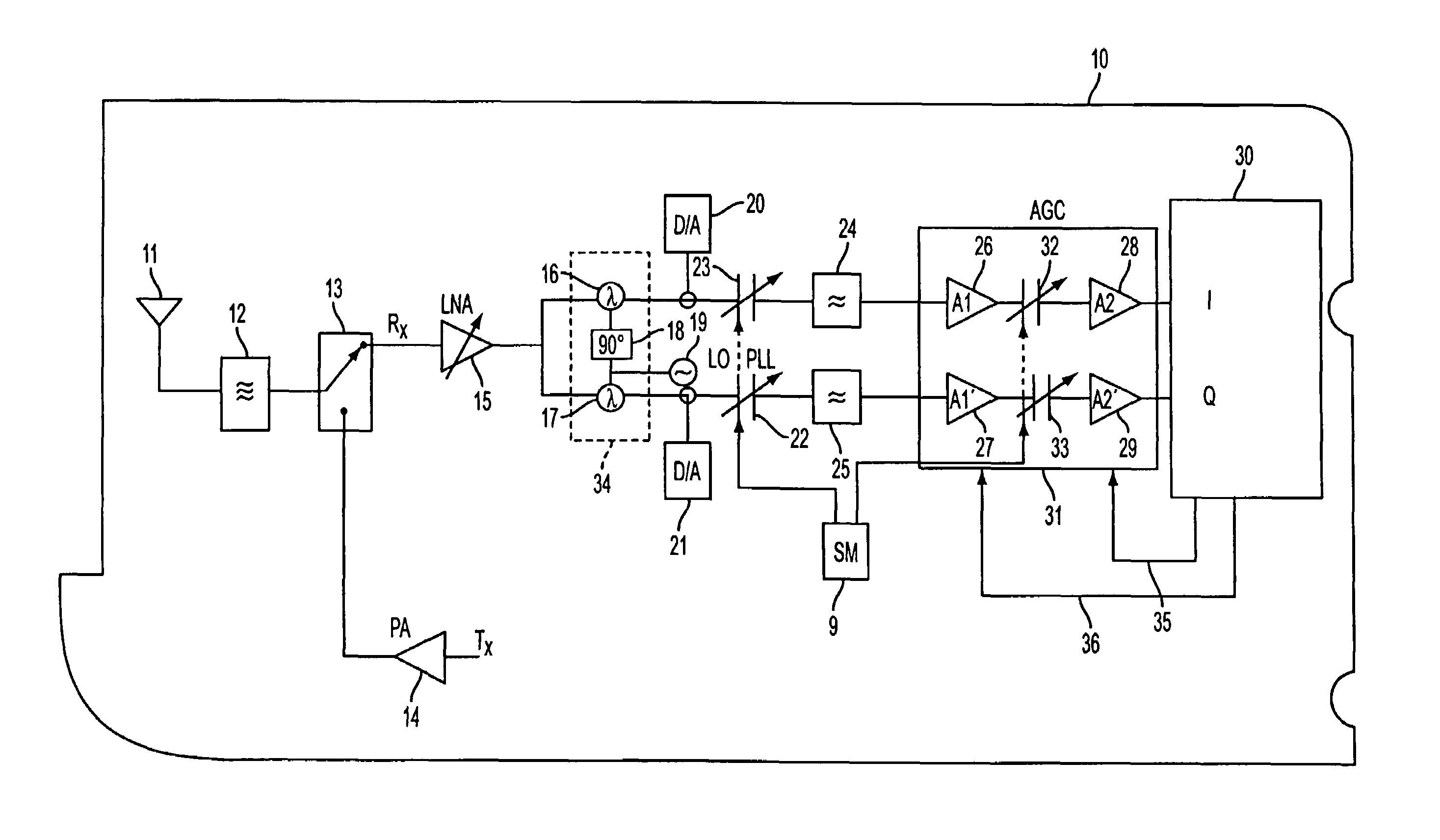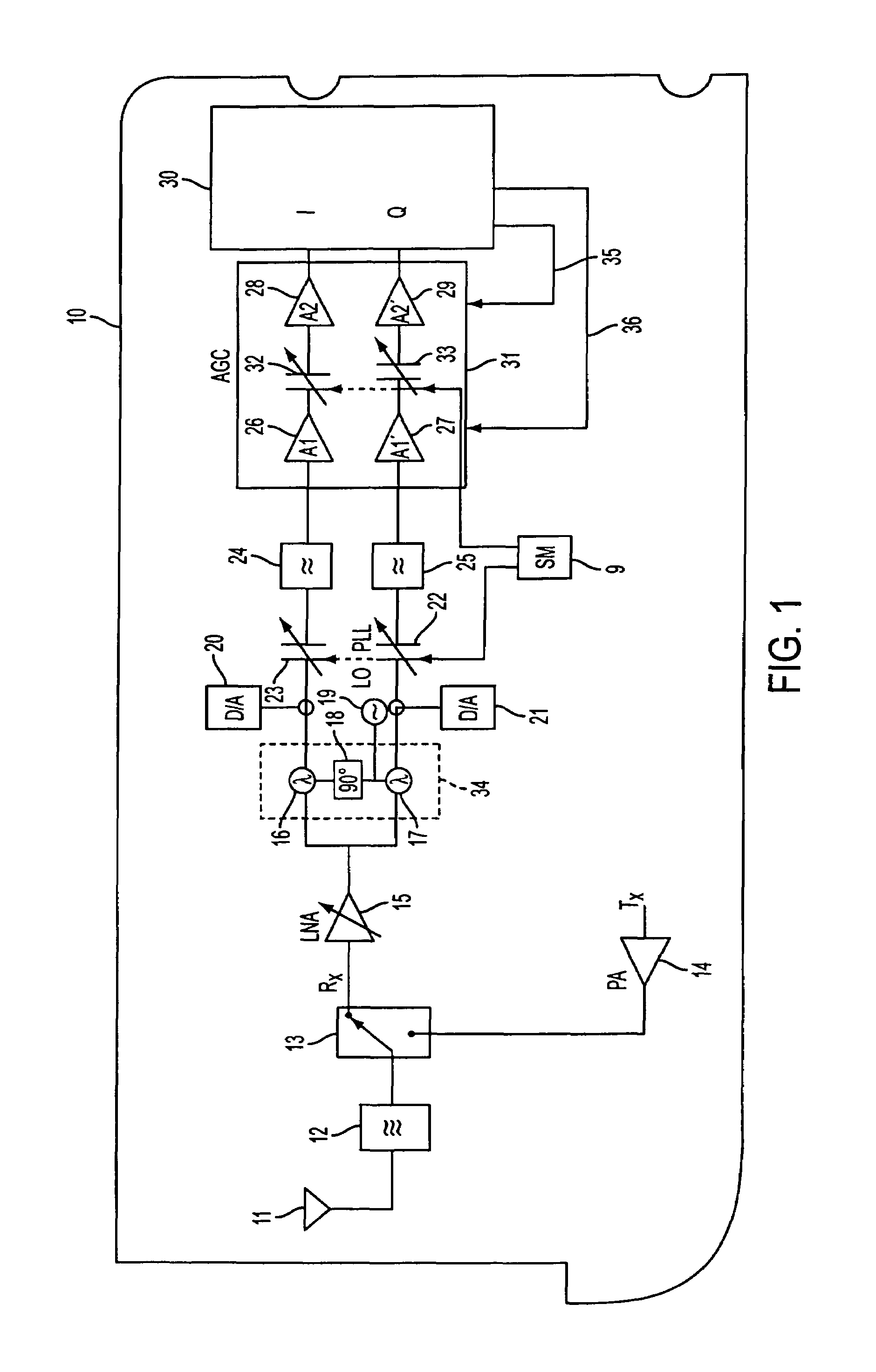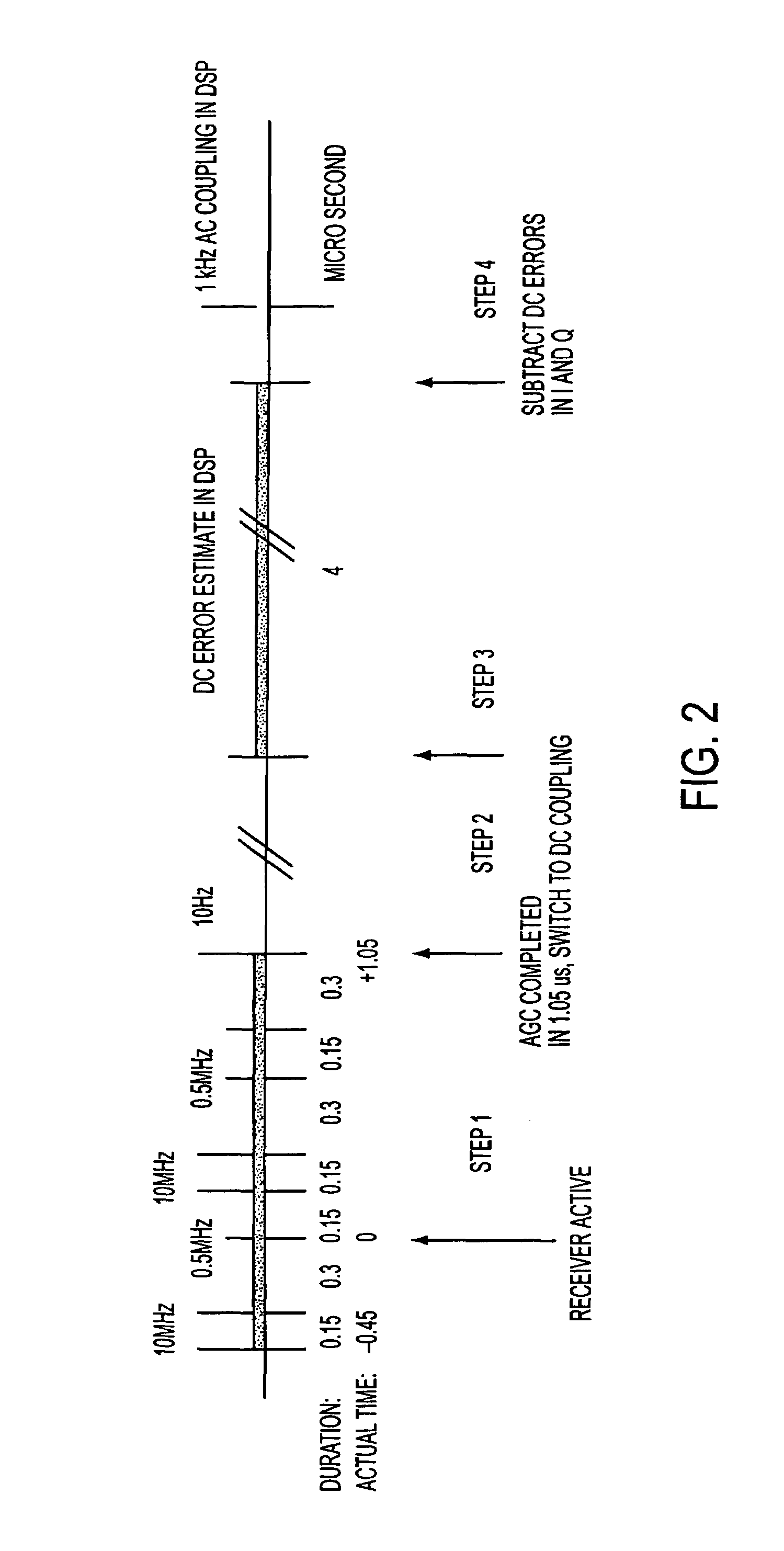DC offset cancellation in a zero if receiver
a zero-if receiver and dc offset technology, applied in the field of methods and apparatus for correcting dc offset problems, can solve the problems of dc offset errors in the system, dc offset errors that profoundly degrade the snr after demodulation, and amplifiers used in the i and q branches to saturate, so as to minimize the effect of dc offset errors
- Summary
- Abstract
- Description
- Claims
- Application Information
AI Technical Summary
Benefits of technology
Problems solved by technology
Method used
Image
Examples
Embodiment Construction
[0012]Using a combination of techniques such as AC and DC coupling, automatic gain control, and digital signal processing, the DC offsets are removed to insignificant levels. The main features or steps of the invention are dynamically changing the cut off frequency of an AC coupling stage; computing a DC signal error over a time period in which the I and Q signals complete a single or multiple cycles, subtracting the estimated DC errors from the I and Q signals, and high-pass filtering the resultant signal so that residual DC errors are removed. The implementation and timing of these steps allows for DC offset control that is far superior to prior art systems.
[0013]In a second embodiment a D / A converter is used in each of the I and Q branches to significantly reduce the DC offset, and the steps as mentioned above are followed. The DSP does a course DC correction with the D / A converter, and maintains a list of correction values for all combinations of antenna diversity and LNA amplif...
PUM
 Login to View More
Login to View More Abstract
Description
Claims
Application Information
 Login to View More
Login to View More - R&D
- Intellectual Property
- Life Sciences
- Materials
- Tech Scout
- Unparalleled Data Quality
- Higher Quality Content
- 60% Fewer Hallucinations
Browse by: Latest US Patents, China's latest patents, Technical Efficacy Thesaurus, Application Domain, Technology Topic, Popular Technical Reports.
© 2025 PatSnap. All rights reserved.Legal|Privacy policy|Modern Slavery Act Transparency Statement|Sitemap|About US| Contact US: help@patsnap.com



